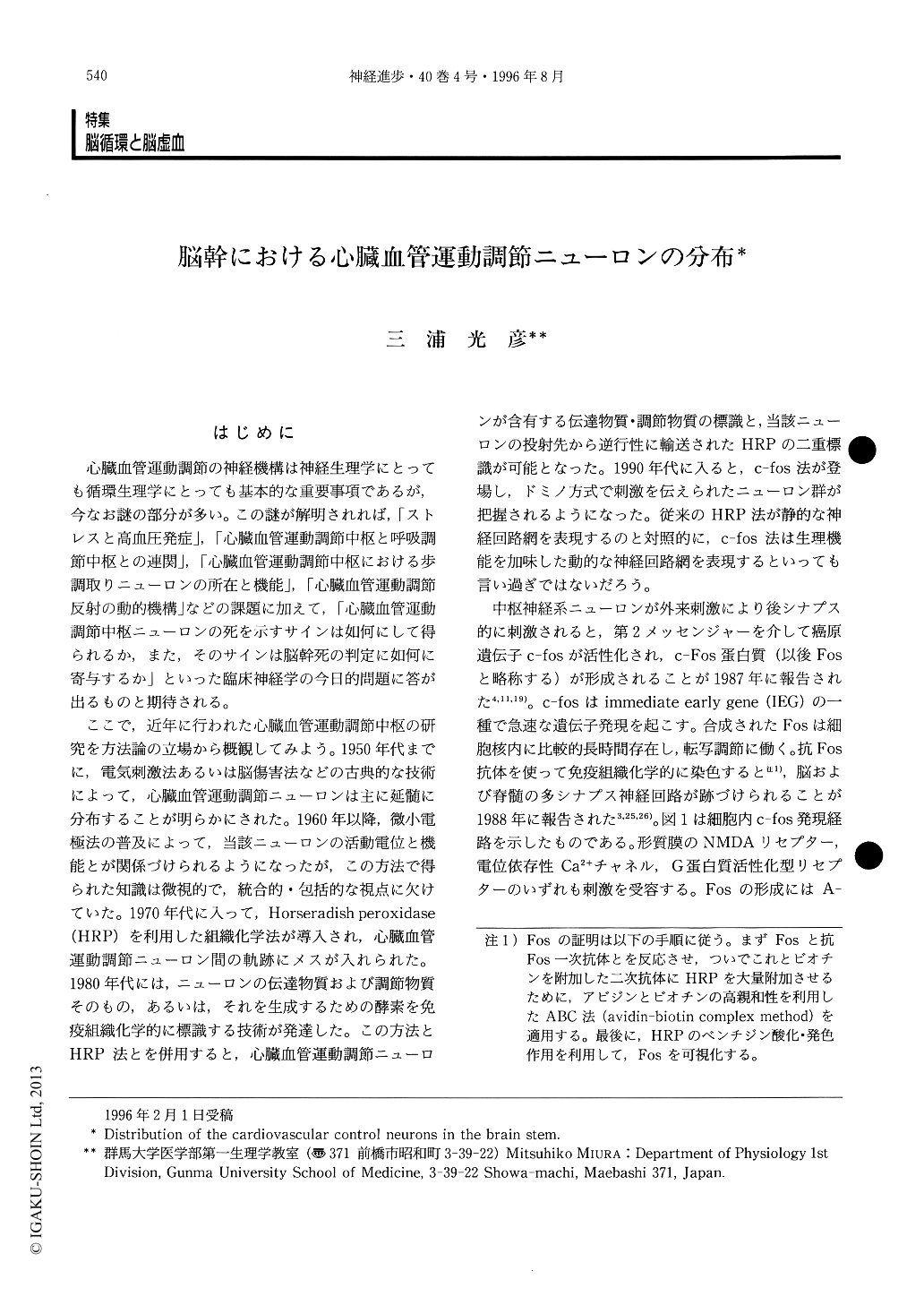Japanese
English
- 有料閲覧
- Abstract 文献概要
- 1ページ目 Look Inside
はじめに
心臓血管運動調節の神経機構は神経生理学にとっても循環生理学にとっても基本的な重要事項であるが,今なお謎の部分が多い。この謎が解明されれば,「ストレスと高血圧発症」,「心臓血管運動調節中枢と呼吸調節中枢との連関」,「心臓血管運動調節中枢における歩調取りニューロンの所在と機能」,「心臓血管運動調節反射の動的機構」などの課題に加えて,「心臓血管運動調節中枢ニューロンの死を示すサインは如何にして得られるか,また,そのサインは脳幹死の判定に如何に寄与するか」といった臨床神経学の今日的問題に答が出るものと期待される。
ここで,近年に行われた心臓血管運動調節中枢の研究を方法論の立場から概観してみよう。1950年代までに,電気刺激法あるいは脳傷害法などの古典的な技術によって,心臓血管運動調節ニューロンは主に延髄に分布することが明らかにされた。1960年以降,微小電極法の普及によって,当該ニューロンの活動電位と機能とが関係づけられるようになったが,この方法で得られた知識は微視的で,統合的・包括的な視点に欠けていた。
The purpose of this study was to establish a topological map of the cardiovascular control neurons in the CNS by means of the immunohistochemical methods. Using rats anesthetized with urethane/α-chloralose, we identified the CNS neurons that express c-Fos protein (Fos) after repetitive stimulation of arterial baroreceptors. Second, among various anesthetic drugs, we found that fentanyl/midazolam depress false positive expression of Fos-labeled neurons.

Copyright © 1996, Igaku-Shoin Ltd. All rights reserved.


